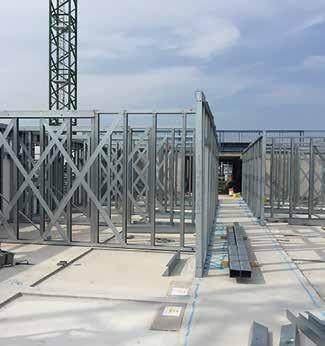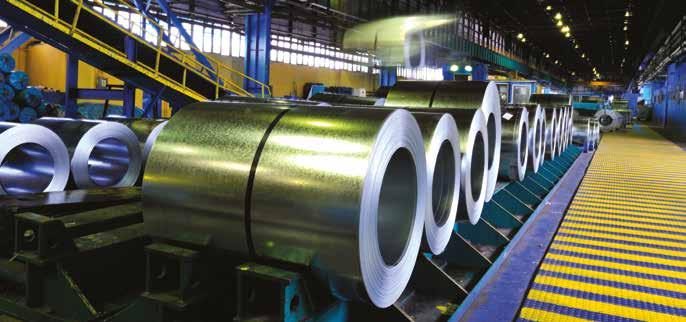
2 minute read
Sustainability in LSF Construction
Sustainability is quantified in terms of various measures of environmental, social and economic performance. These issues can be addressed through the use of light steel framing systems, however, the benefits of using these systems are not widely understood. This document seeks to address these issues and outline the environmental credentials of the technology.
HM Government ‘Construction 2025 (July 2013 Report)’ stated that LSF was “an industry that has become dramatically more sustainable through its efficient approach to delivering low carbon assets more quickly and at lower cost, underpinned by strong, integrated supply chains and productive long term relationships.” As time has progressed steel has become part of a carbon neutral solution and sustainability is back at the top of the construction agenda. However, when budgets come into play it is safety, cost, programme, design adaptability and structural integrity which are more often the deciding factors, but the importance of sustainability must not be overlooked when assessing the build system to be used.
When looking at LSF against other offsite technologies timber may appear to have a ‘softer/green’ image, whereas light steel frame is often seen as having less sustainable credentials. However, it is well known that steel is one of the world’s most recycled materials with a potential recovery and re-use factor in excess of 90% so performs better than timber when all factors are taken into account over the whole life of the building. that a lightweight structure is required and this lightweight technology is clearly LSF. This is particularly relevant when looking at lifecycle analysis including recycling at the end of a building’s life which must be factored in to any sustainability discussion with the highly recyclable nature of steel. Steel Construction Institute (SCI) publication ‘Protocol for reusing structural steel’ concludes that the environmental advantages of re-using reclaimed structural steel are considerable, compared to the common practice of recycling by re-melting scrap. There are also potential cost savings to be considered which influence the system selected.
This protocol notes that material characteristics declared under CE marking procedures are designed to ensure that the material is as specified in design. When using reclaimed steel, the design is based on the material properties (tested or conservatively assumed), maintaining the relationship between design assumptions and material resistance. It is therefore appropriate that re-fabricated, reclaimed structural steelwork may be CE Marked in accordance with EN 1090, which demonstrates its suitability for re-use.
It is also worth noting that the steel manufacturing environment is more automated than more traditional build technologies and the industry has become incredibly efficient at value engineering and minimising waste through Design for Manufacture and Assembly (DfMA) approaches. This is assisted by the advances in digital engineering with better use of Building Information Modelling (BIM).




